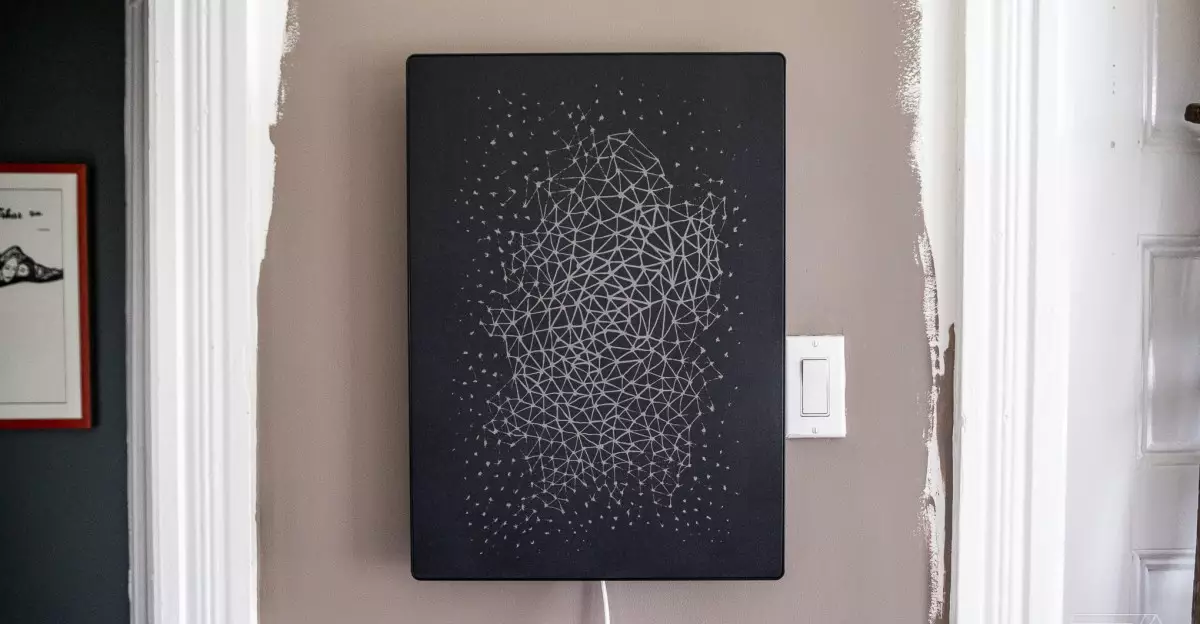The landscape of home audio has always been dynamic, shaped by technological advancements and consumer preferences. Yet, the recent announcement that Sonos and Ikea are winding down their Symfonisk collaboration signals a pivotal moment in the industry. The Symfonisk lineup, which once promised to blend home decor with high-quality audio, is now officially coming to an end, with no new products on the horizon. This decision, while perhaps a strategic necessity, speaks volumes about the challenges and shifts in priorities that companies face in today’s competitive market.
Sonos and Ikea, known for their unique partnership that brought forth products such as lamp speakers and picture frame speakers, have done more than just create audio devices; they carved a niche that blended aesthetic appeal with audio functionality. When Symfonisk was launched, it revolutionized the way people thought about speakers—less as tech gadgets and more as integral components of home design. However, as the collaboration comes to a close, it raises an important question: Was the effort truly sustainable, or did it simply mask larger issues that need addressing?
Consumer Expectations vs. Market Reality
The discontinuation of the Symfonisk lineup underscores the reality that consumer expectations do not always align with market capabilities. Despite the innovative designs and features, the sales velocity was evidently not enough to warrant continued investment from Sonos, which is crucial for a company striving for durable growth. The products originally aimed to deliver quality audio at a more accessible price point, but as time passed, they were overshadowed by the advancing iterations of Sonos’s own range, such as the Era 100 and Move 2.
The duality of Symfonisk’s appeal — both as an entry-level product and a stylish home accessory — likely contributed to the confusion among consumers. Many might have purchased them to enhance their decor, prioritizing aesthetics over sound quality. While Sonos’s market strategy offered a blend of elegance and performance, the reality of prioritizing higher profit margins and premium audio outputs may have shifted the brand’s focus away from collaborations like Symfonisk. This dilemma begs for introspection: could Sonos refocus its efforts on creating a more coherent product line that maintains its quality while addressing varying consumer needs?
Impact on the Sonos Ecosystem
Even as Sonos phases out the Symfonisk products, there is a significant reassurance from the company that existing users will still receive software support. This decision reflects a commitment to customer satisfaction, helping alleviate anxiety for current owners who may have worried about the longevity of their investments. The integration of Symfonisk products within Sonos’s larger audio ecosystem has been lauded, and their utility as affordable solutions for home theater setups showcased Sonos’s keen understanding of market demands.
However, what should concern consumers is the wider repercussions this may have on the Sonos ecosystem. As much as they aim to support current products, the absence of new offerings means potential buyers are deprived of innovative enhancements. The audio industry is notoriously fast-paced; technology evolves quickly, and with it, user demands shift. The question remains whether Sonos can pivot rapidly enough to adapt to these changes without the buffer that the Symfonisk line provided.
The Road Ahead: Challenges and Opportunities
Beyond the Symfonisk saga, Sonos is currently navigating a myriad of challenges, including impending tariffs and a spike in competitive pressures. With the price drops of products like the Era 100 speaker and Ray soundbar, one cannot help but question whether these moves are indicative of a company grappling with market saturation or simply a strategic maneuver to reignite interest in its core products.
Furthermore, Sonos’s focus on improving its mobile software experience after a rocky app update is commendable. However, it begs the question: Will enhancing user experience be sufficient to maintain consumer loyalty? As the competition escalates, Sonos must not only polish its software but also consider how to innovate its hardware offerings, which are undeniably at risk of becoming stale.
While Sonos is undoubtedly a household name in home audio, the phasing out of Symfonisk symbolizes a critical juncture. Companies that can adapt quickly, think creatively, and listen closely to their users are the ones destined to thrive in this changing landscape. The question remains whether Sonos can emerge from the shadows of its past collaborations as a stronger entity or if it will find itself in retreat as the audio market evolves around it.


Leave a Reply